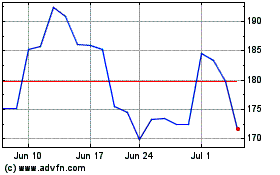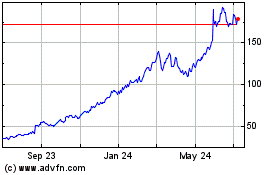Does the start of holiday sales suggest a break from the phase when
US consumers were reeling under a series of macro-economic shocks?
For now, the initial data released by National Retail Federation
suggests that Santa has a bagful of gifts for the majority of
retailers this holiday season.
Early reports hinted that the retailers have won over prolonged
macro-economic uncertainty. Shoppers shrugged off their economic
woes to mark record holiday weekend sales of $52.4 billion.
Supporting the view, data released by the Conference Board reveals
that Consumer Confidence Index increased to 56.0 in November from
40.9 in October (its highest level since July, when the index
reached 59.2). Further, data from the Commerce Department noted
consumer spending to have recorded its fastest growth in third
quarter 2011. The quarter saw an annualized growth rate of 2.3% for
consumer spending.
According to a survey of the National Retail Federation, a whopping
226 million shoppers visited stores and went online over the Black
Friday weekend, up from 212 million last year. The retailers
offered deep discounts, early store openings and free shipping to
online customers to make the most of the busiest shopping week of
the year.
In order to get their share of pie, retailers like
Macy’s
Inc. (M) and
Best Buy Co. Inc. (BBY), for
the first time this year opened their stores early. According to
sales estimates, Best Buy marked a trend reversal from last year,
as it drew an increased number of shoppers, while Macy’s registered
incremental sales.
Bonding with Shoppers
Of late, the retail industry has been experiencing a shift in
consumers' shopping patterns. These days, shoppers are spending on
essentials primarily and are looking for value-adds.
Across all income levels, shoppers are ranking value-for-price as
the most important reason for store choices. Thus, the retailers
are offering trend-right and well-designed assortments at
compelling prices, without compromising quality, in order to
improve merchandise margins.
Lingering Concerns
We believe that a slow-moving US and Asia, and recessionary fears
in Europe, will continue to weigh upon consumer discretionary
purchases. Further, inflation from rising commodity prices and
significant disruption in global credit markets will create
difficulties going forward.
Moreover, consumers remain sensitive to macro-economic factors
including interest rate hikes, increase in fuel and energy costs,
credit availability, unemployment levels, and high household debt
levels, which may negatively impact their discretionary spending,
and in turn adversely affect the growth and profitability of retail
companies.
Beyond the macro factors, rising inventory levels remain a drag on
the margins of softline retailers. Evidently, as in the case of
Aeropostale Inc. (ARO) and
Urban
Outfitters Inc. (URBN), even deep discounts offered by
them are not helping to tame margin pressures.
Addressing the Challenges
Every challenge comes with an opportunity and most of the retailers
have pulled up their socks and incorporated many strategic measures
to mitigate the top-line headwinds.
Starting from enhancing the supply-chain management to going
global, from improving their productivity through operating
efficiencies to bringing in the technological advancements, the
retailers are trying to play every card dealt.
With consumers attaining confidence in the market and increasing
their spending power, companies are focusing on cost containment,
inventory management and merchandise initiatives to improve margins
through leverage on buying and occupancy expenses.
Going forward, with the advent of technology, an increasing number
of consumers are using smartphones and tablets to purchase items. A
recent data released by ComScore Inc. justifies the stance and
reports a 26% jump in online spending on Black Friday to $816
million. Thus, most of the companies have incorporated e-commerce
platforms to bring in incremental gains.
The technological advancement in marketing such as, ecommerce and
online business provides a win-win situation for both the retailers
and shoppers, as it enables the companies to generate additional
sales and broadens the company’s existing customer base throughout
the world. Moreover, it also enhances the visibility and reputation
of the retailer as a global firm offering great fashion and value
at the same time. On the other side, shoppers get the benefit of
purchasing researched products at the best prices, as they can
compare the prices being offered by various companies.
The ComScore data suggests that the online retailers experienced a
notable jump in Black Friday activity in comparison to last year.
Amazon.com Inc. (AMZN) led the pack as it
generated 50% more visitors than any other retailer.
Further, the international turf provides ample long-term
opportunities for retailers to enhance their margins. Thanks to
globalization, retailers have the opportunity to explore and add
newer markets for their products by opening new stores or through
e-commerce sites.
Needless to emphasize that only strong and popular brands have the
potential to drive growth through the global markets. Following our
rationale, we are bullish on
Ralph Lauren
Corporation (RL), Macy’s and
Lululemon Athletica
Inc. (LULU), while we are Neutral on
J.C. Penney
Company Inc. (JCP),
Abercrombie & Fitch
Co. (ANF) and
Gap Inc. (GPS).
November Comparables
The start of the holiday season led a majority of the retailers to
register healthy sales in November, as lucrative discounts offered
by them pulled shoppers to their stores. According to the data
released by Retail Metrics, comparable-store sales for over 20
companies rose 3.2%, beating the streets’ expectation of 3.1%.
Retail chains like
Costco Wholesale Corporation
(COST),
Nordstrom Inc. (JWN), Macy's,
Ross
Stores Inc. (ROST),
Limited Brands Inc.
(LTD),
Saks Incorporated (SKS) and many others
have reported strong comparables for the month of November
2011.
The key reasons for their strong performances appear to be their
continuous effort to offer innovative products and value pricing
coupled with their adaptability to the buying habits of the
consumers and strengthen loyalties.
OPPORTUNITIES
Costco Wholesale Corporation (COST) registered a
growth of 9% in comparable store sales. Excluding the effects of
higher gasoline prices and foreign currencies fluctuation, Costco’s
comparable-store sales increased 7%.
Macy's Inc. (M), reported same-store sales growth
of 4.8%. Total sales were up 5.3% to $2,465 million. An increase in
online sales added to the surge in same-store sales growth.
Nordstrom Inc’s (JWN) same-store sales for
November 2011 increased 5.6% compared with the same month last
year. Total retail sales were $910 million, up 11.6% from $815
million in November 2010.
Saks Incorporated (SKS), the luxury department
store, marked a 9.3% increase in comparable store sales for
November 2011. Owned sales increased 8.7% to $277.1 million during
the period.
Limited Brands Inc. (LTD), a specialty retailer of
women’s intimate and other apparel, beauty and personal care
products posted a 7% increase in comparable-store sales for
November 2011. Total sales for the period came in at $872.6 million
for the period.
WEAKNESSES
Kohl's Corp. (KSS), value-oriented specialty department
store offering moderately priced, exclusive and national brand
apparel, shoes, accessories, beauty and home products in an
exciting shopping environment, reported that company’s
comparable-store sales for November 2011 decreased 6.2% with total
sales shrinking 4.5% to $1,930 million.
Gap Inc. (GPS), a premier international specialty
retailer offering a diverse range of clothing, accessories, and
personal care products, reported a 5% decrease in same store sales
for the four-week period ended November 27, 2011. The company
reported a decline of 3% in net sales for the period.
J.C. Penney Company Inc. (JCP) reported a 2%
decline in comparable store sales for November 2011. Moreover,
total sales decreased 5.9% to $1,737 million during the period.
Summing Up
Retail is basically a volume game. Going forward, with the raging
competition and price wars, the players who will be able to cater
to the needs of discerning consumers will grow volumes by ensuring
foot falls and margin expansion and will have the final laugh.
Further, the ratio of converting shoppers to buyers will also rest
on the continued economic recovery and improvement in the job
market. This will ultimately boost consumer confidence and increase
discretionary spending.
AMAZON.COM INC (AMZN): Free Stock Analysis Report
ABERCROMBIE (ANF): Free Stock Analysis Report
AEROPOSTALE INC (ARO): Free Stock Analysis Report
BEST BUY (BBY): Free Stock Analysis Report
COSTCO WHOLE CP (COST): Free Stock Analysis Report
GAP INC (GPS): Free Stock Analysis Report
PENNEY (JC) INC (JCP): Free Stock Analysis Report
NORDSTROM INC (JWN): Free Stock Analysis Report
KAPSTONE PAPER (KS): Free Stock Analysis Report
LIMITED BRANDS (LTD): Free Stock Analysis Report
LULULEMON ATHLT (LULU): Free Stock Analysis Report
MACYS INC (M): Free Stock Analysis Report
RALPH LAUREN CP (RL): Free Stock Analysis Report
ROSS STORES (ROST): Free Stock Analysis Report
SAKS INC (SKS): Free Stock Analysis Report
URBAN OUTFITTER (URBN): Free Stock Analysis Report
Zacks Investment Research
Abercrombie and Fitch (NYSE:ANF)
Historical Stock Chart
From Jun 2024 to Jul 2024

Abercrombie and Fitch (NYSE:ANF)
Historical Stock Chart
From Jul 2023 to Jul 2024
